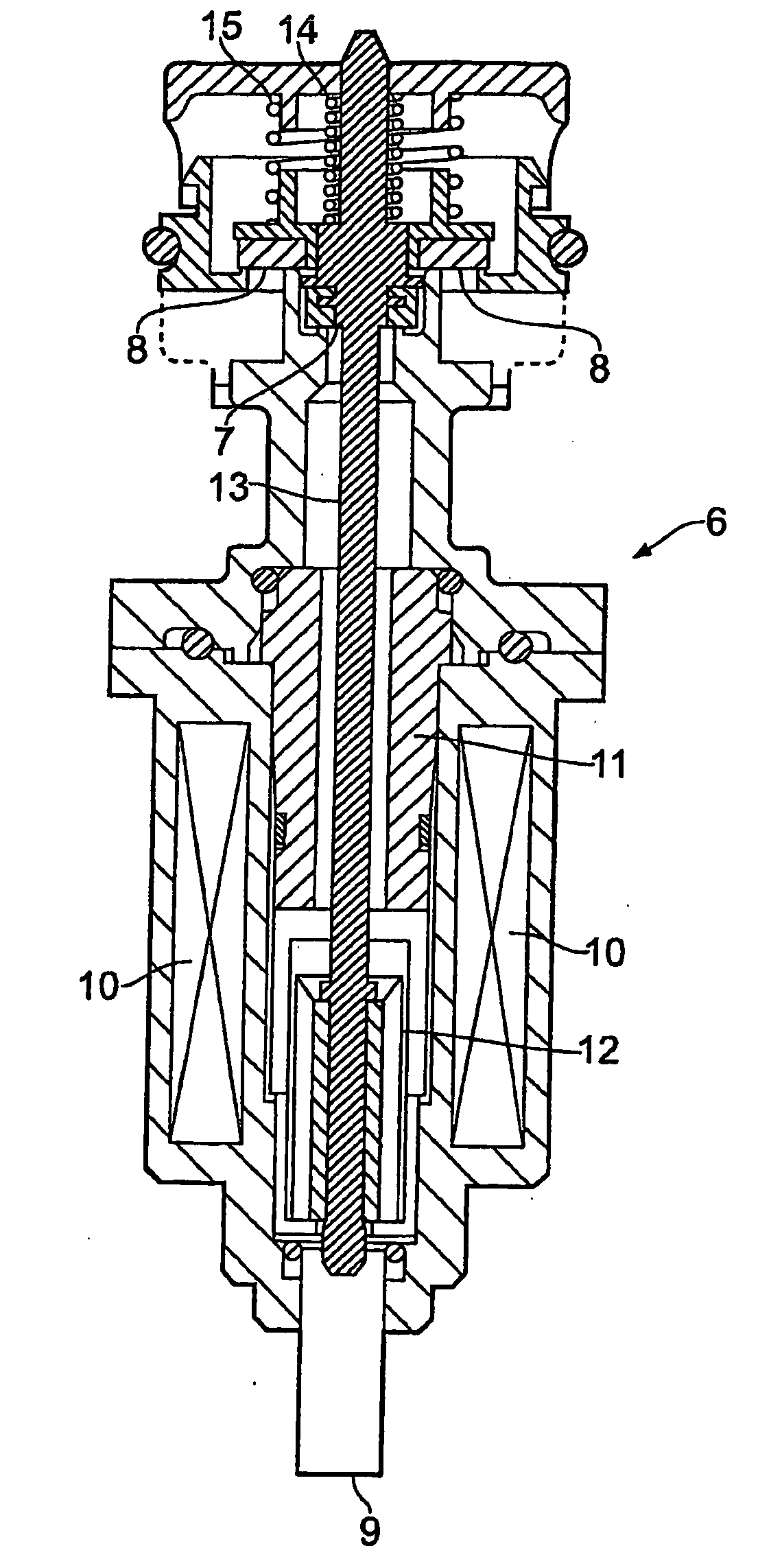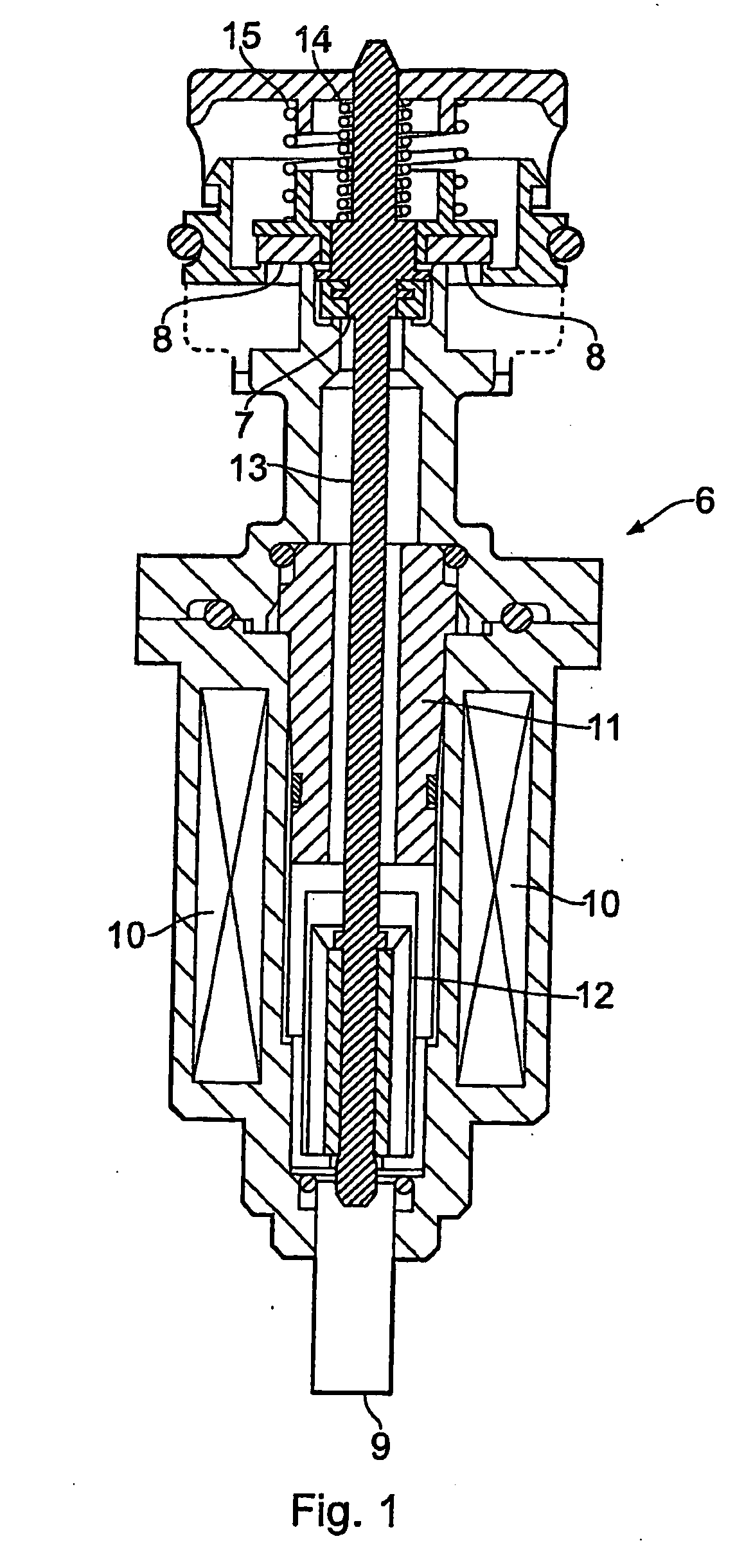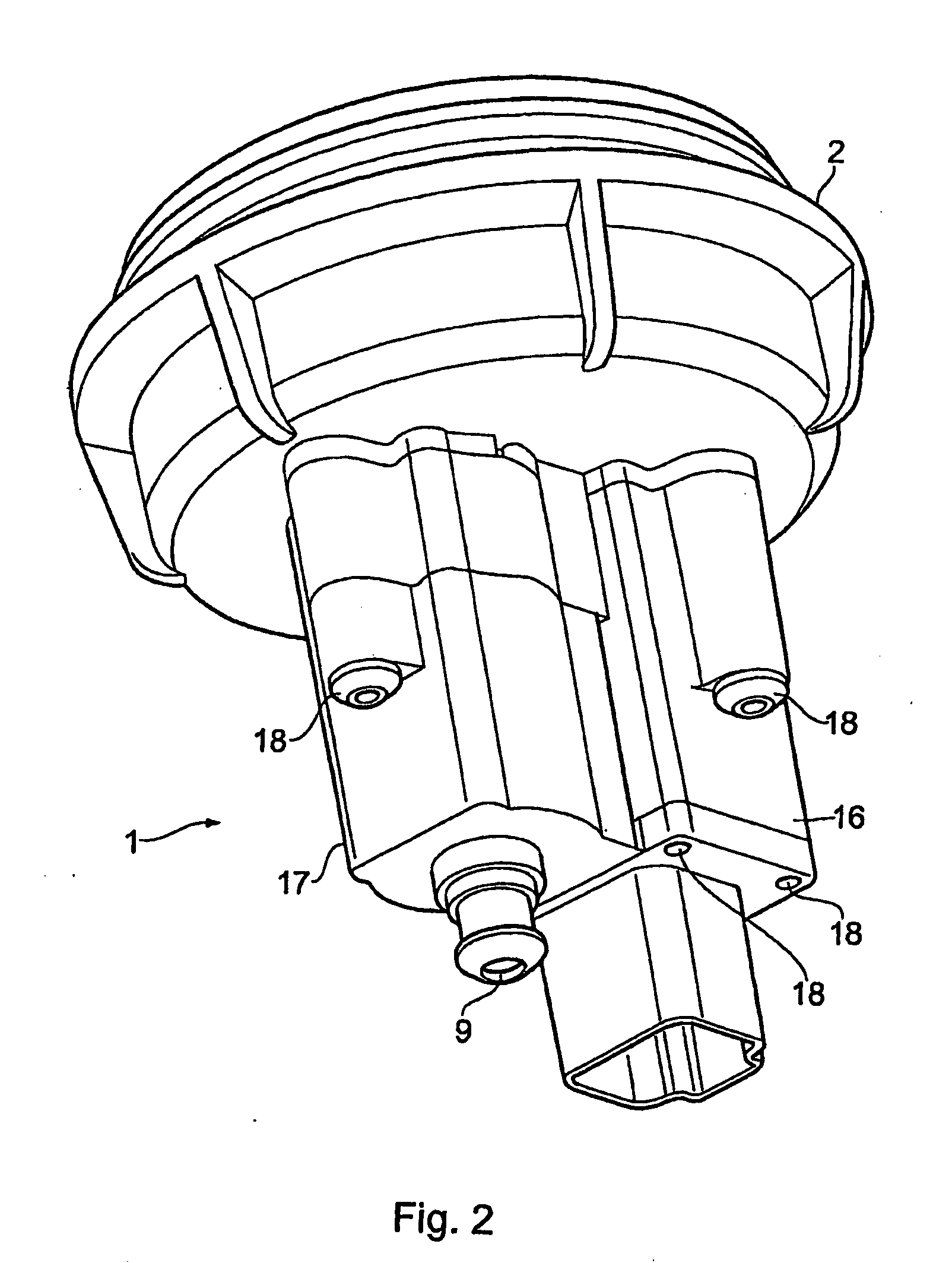Water draining system for a fuel filter
a fuel filter and water draining system technology, applied in the direction of liquid fuel feeders, filtration circuits, water/sludge/sewage treatment, etc., can solve the problems of compartment draining, compartment draining, and many challenges, so as to reduce the likelihood of corrosion, reduce the current level, and reduce the space
- Summary
- Abstract
- Description
- Claims
- Application Information
AI Technical Summary
Benefits of technology
Problems solved by technology
Method used
Image
Examples
Embodiment Construction
[0049]Referring to the drawings, the water draining system includes a housing 1 and a reservoir 2 mounted to the housing for collecting water from a fuel filter (not shown).
[0050]The housing includes a water sensor 3 with its distal end protruding into the reservoir 2 and its proximal end protruding into the housing 1. The proximal end is connected to a controller which is located either inside or outside the housing. The controller is connected to a power source, such as a battery.
[0051]In one embodiment, the water sensor includes a pair of sensing elements 4 having a voltage running therethrough. The distal tips of the sensing elements 4 protrude through one end of a sensor retaining module 5 and the proximal ends of the sensing elements 4 extend into the inner space of housing 1. The retaining module 5 prevents the un-exposed portion of the tips from coming in contact with any water contained in the reservoir 2.
[0052]Preferably, the reservoir 2 is coupled to one side of the housi...
PUM
| Property | Measurement | Unit |
|---|---|---|
| time period | aaaaa | aaaaa |
| current | aaaaa | aaaaa |
| current | aaaaa | aaaaa |
Abstract
Description
Claims
Application Information
 Login to View More
Login to View More - R&D
- Intellectual Property
- Life Sciences
- Materials
- Tech Scout
- Unparalleled Data Quality
- Higher Quality Content
- 60% Fewer Hallucinations
Browse by: Latest US Patents, China's latest patents, Technical Efficacy Thesaurus, Application Domain, Technology Topic, Popular Technical Reports.
© 2025 PatSnap. All rights reserved.Legal|Privacy policy|Modern Slavery Act Transparency Statement|Sitemap|About US| Contact US: help@patsnap.com



